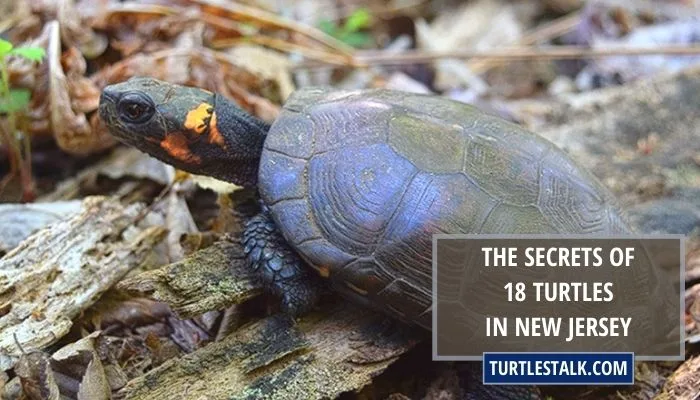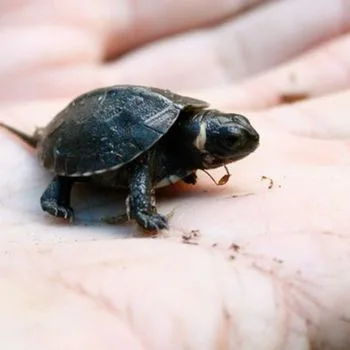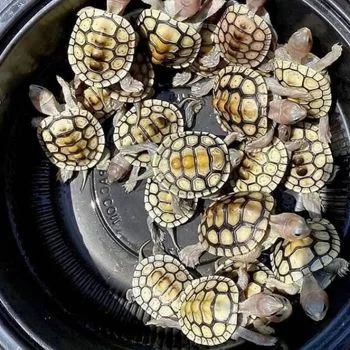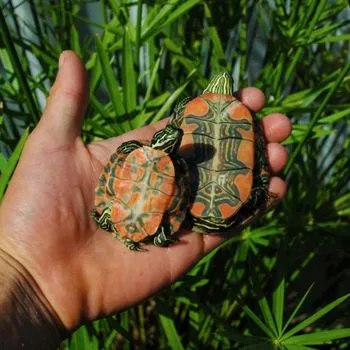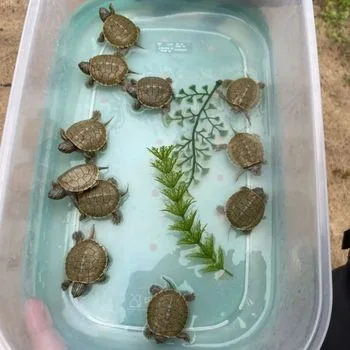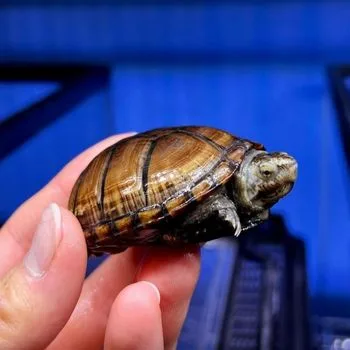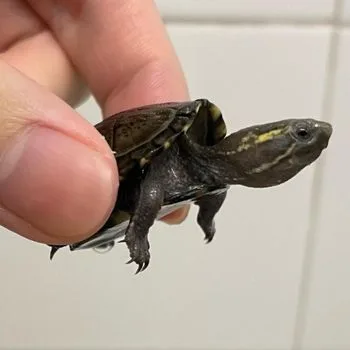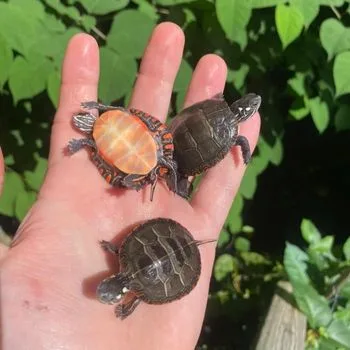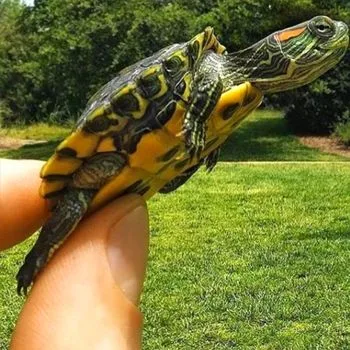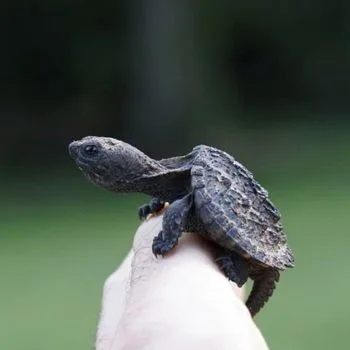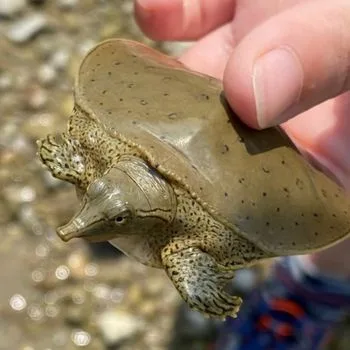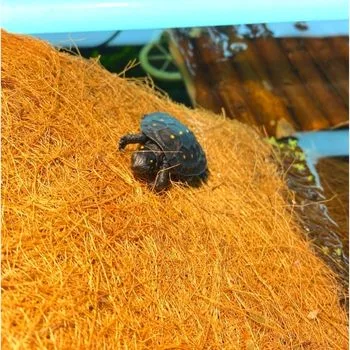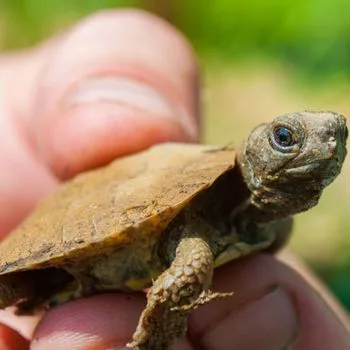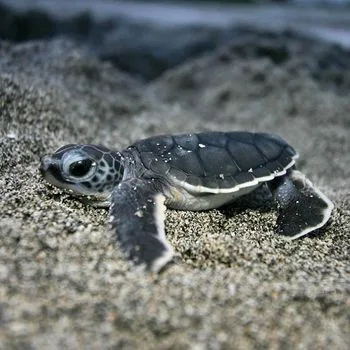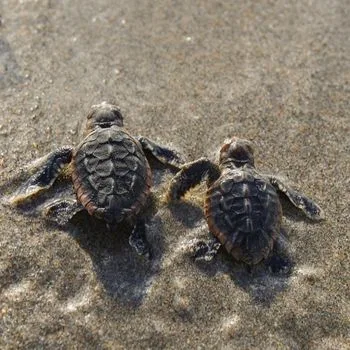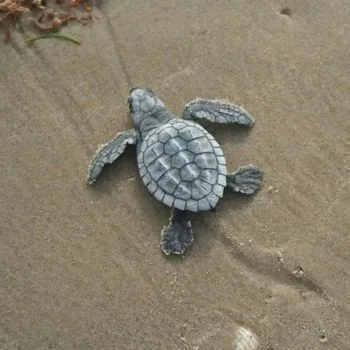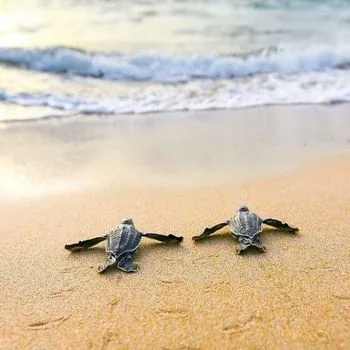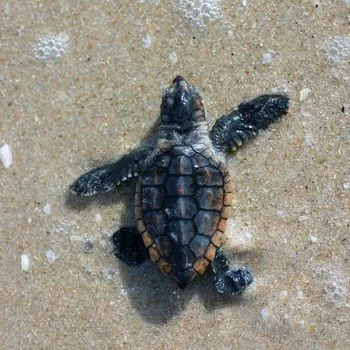The Secrets of 18 Turtles in New Jersey
Who knew that New Jersey had its own aquatic turtle population! Yes, it’s true – there are 18 species of turtles living in the Garden State. 13 of these species call brackish and freshwater areas like rivers and lakes their home. From the Northern Diamondback terrapin to the Common Snapping Turtle, you can find a variety of fascinating creatures beneath the surface.
So if you’re looking for an adventure close to home, why not take a dip into New Jersey’s turtle world? Whether you’re a novice or expert turtle enthusiast, this article will provide all the information you need on these incredible reptiles. Let’s get started!
| # | Name | Details | Image |
| 1 | Bog Turtle |
| 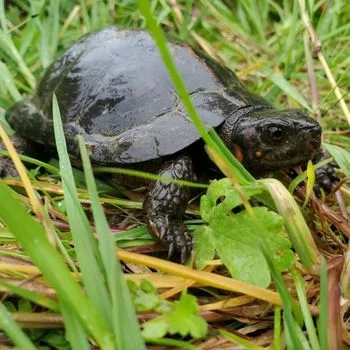 |
| 2 | Eastern Box Turtle (Terrapene Carolina) |
| 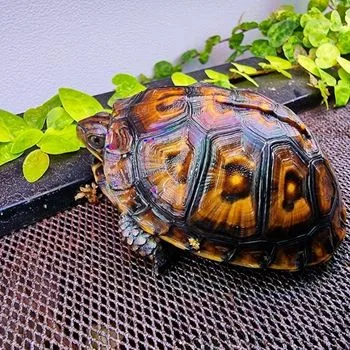 |
| 3 | Northern Red-Bellied Cooter (Pseudemys Rubriventris) |
| 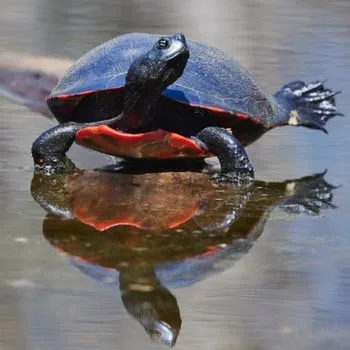 |
| 4 | Northern Diamondback Terrapin (Malaclemys terrapin terrapin) |
| 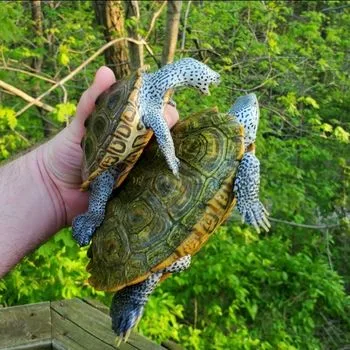 |
| 5 | Northern Map Turtle (Graptemys Geographica) |
| 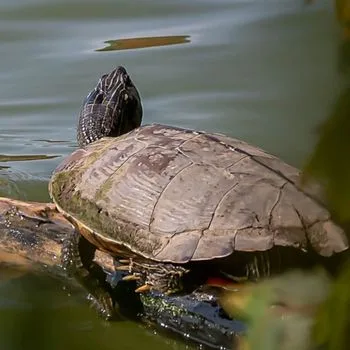 |
| 6 | Eastern Mud Turtle (Kinosternon Subrubrum) |
| 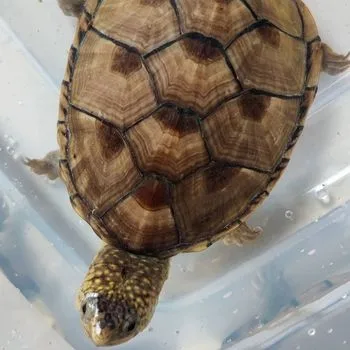 |
| 7 | Common Musk Turtle (Sternotherus Odoratus) |
| 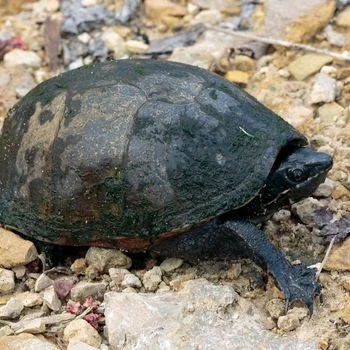 |
| 8 | Eastern Painted Turtle (Chrysemys Picta) |
| 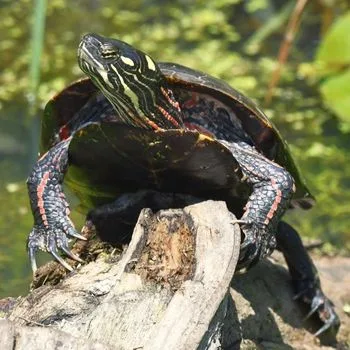 |
| 9 | Red Eared Slider (Trachemys Scripta Elegans) |
| 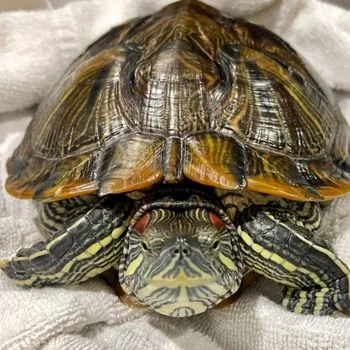 |
| 10 | Common Snapping Turtle (Chelydra serpentina) |
| 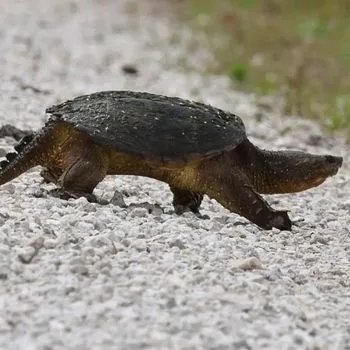 |
| 11 | Eastern Spiny Softshell Turtle (Apalone Spinifera) |
| 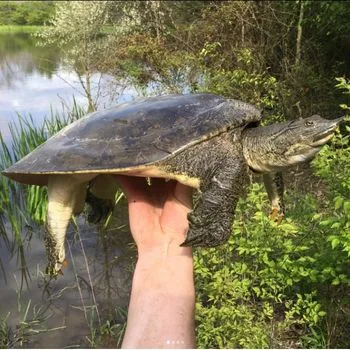 |
| 12 | Spotted Turtle (Clemmys Guttata) |
| 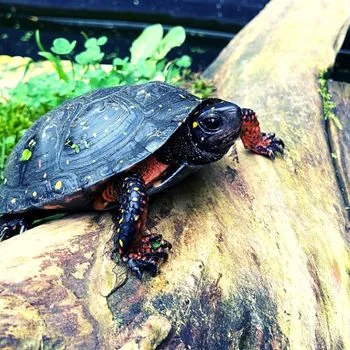 |
| 13 | Wood Turtle (Glyptemys Insculpta) |
| 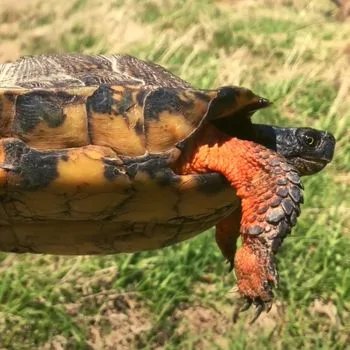 |
| 14 | Atlantic Green Sea Turtle (Chelonia Mydas) |
| 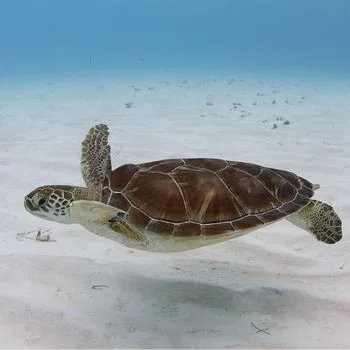 |
| 15 | Atlantic Hawksbill Sea Turtle (Eretmochelys Imbricata) |
| 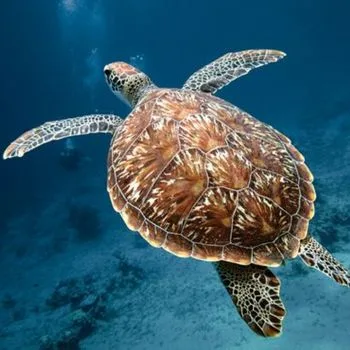 |
| 16 | Kemp’s Ridley Sea Turtle (Lepidochelys kempii) |
| 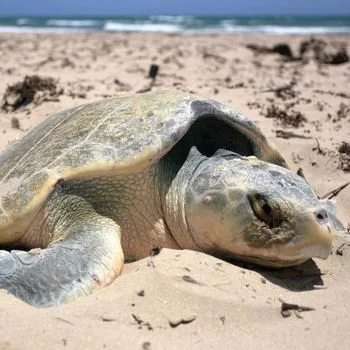 |
| 17 | Leatherback Sea Turtle (Dermochelys Coriacea) |
|  |
| 18 | Loggerhead Sea Turtle (Caretta Caretta) |
| 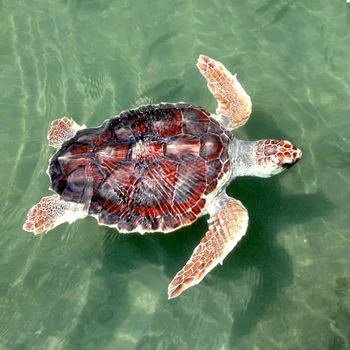 |
18 Turtles You Can Find in New Jersey
In total, there are 18 species of turtles in the state of New Jersey. This guide will take you on an exploration through each turtle type and provide tips for providing them with proper care. So, let’s get started on our journey into discovering all the wonders that these reptiles have to offer!
1. Bog Turtle
- Family: Emydidae
- Genus: Glyptemys
- Type: Terrestrial turtle
- Natural Habitat: Wetlands, bogs, and swamps
- Lifespan: 20-30 years
- Maximum Size: 4-5 inches
- Maximum Weight: 1-2 pounds
- Prone to Diseases: Parasites and fungal infections
- Aggression Level: Mildly aggressive, may bite if threatened
- Predators: Skunks, raccoons, and foxes
- Domestication: Illegal to possess without permit in most states
The Bog Turtle, or Glyptemys muhlenbergii, is a critically endangered species of turtle native to wetlands, bogs, and swamps in the Northeastern and north-central United States. With a carapace length of 4-5 inches and weighing around 1-2 pounds, there is no size variation between male and female Bog Turtles. They have a lifespan of 20-30 years.
Skunks, raccoons, foxes and humans are the main predators of these turtles as juveniles are highly vulnerable due to their small size. Unfortunately, they also face threats from exploitation for the pet trade—it is illegal to remove them from the wild and possess them without a permit in most states. Bog Turtles are not commonly kept as pets as they require special environments to thrive in captivity. In addition, these turtles tend to be mildly aggressive and may bite if threatened.
Bog Turtles are not well adapted to aquatic life; instead they prefer warm humid climates like those found in New Jersey. As such they face massive habitat destruction due to urbanization which has led to their listing as an Endangered Species by the Endangered Species Act in several states including New York, Pennsylvania, and Vermont.
To help protect this species it is important for conservation efforts to continue in New Jersey so that healthy ecosystems can be maintained throughout its range. Moreover, educational initiatives need to be established that inform people about the importance of protecting Bog Turtles before their population further declines due to the illegal collection for the pet trade and habitat loss.
2. Eastern Box Turtle (Terrapene Carolina)
- Family: Emydidae
- Genus: Terrapene
- Type: Terrestrial turtle
- Natural Habitat: Deciduous and mixed forests, meadows, and fields
- Lifespan: 60 years
- Also Known As: Eastern terrapin
- Maximum Size: 4-10 inches
- Maximum Weight: Male: 1 pounds, females: 2 pounds
- Prone to Diseases: Respiratory infections, shell rot, and other diseases
- Aggression Level: Not aggressive towards humans
- Predators: Raccoons, skunks, opossums, and snakes
- Domestication: Can be kept as pets
The Eastern Box Turtle (Terrapene Carolina) is one of the most intriguing species found in deciduous and mixed forests, meadows, and fields of eastern North America. This incredible turtle can live up to 40 years in the wild or even reach up to 60 years in captivity! With adult sizes ranging from 4-10 inches, males being slightly smaller than females with a weight of 0.5-1 lb for males and 1-2 lbs for females.
Eastern Box Turtles are not too aggressive towards humans but potential predators may include raccoons, skunks, opossums, and snakes. They can be kept as pets but it is important to consult local laws before doing so since some states make it illegal to collect wild turtles or sell them as pets—including New Jersey. Captive Eastern Box Turtles may be prone to respiratory infections, shell rot, and other diseases common to captive turtles.
This species is state-protected in several states due to the declining population caused by habitat loss and illegal collection for the pet trade. Despite this precarious situation, Eastern Box Turtles can still be found in eastern North America—including New Jersey. It is essential that we take steps to protect this species which calls New Jersey home by preserving their natural habitats as well as improving public awareness of their plight!
3. Northern Red-Bellied Cooter (Pseudemys Rubriventris)
- Family: Emydidae
- Genus: Pseudemys
- Type: Aquatic turtle
- Natural Habitat: Rivers, swamps, and large ponds in the eastern united states
- Lifespan: Can live up to 50 years
- Also Known As: Cooters
- Maximum Size: 10 to 13.5 inches
- Maximum Weight: 12+ pounds
- Prone to Diseases: Mucinous melanophoroma
- Aggression Level: Not aggressive
- Predators: Raccoons, humans
- Domestication: Can be kept as pet
This one is an aquatic turtle native to rivers, swamps, and large ponds in the eastern United States. They reach an average length of 8 to 11 inches with adult males being slightly smaller than females.
These turtles may be kept as pets but require a large aquarium due to their size. Despite their small appearance they are not regarded as aggressive animals so there’s no need for fear if you come across one near New Jersey, simply observe from a respectable distance!
Of course taking them home without permits or licenses is highly illegal – something I’m sure any red-blooded American would know already!
4. Northern Diamondback Terrapin (Malaclemys terrapin terrapin)
- Family: Emydidae
- Genus: Malaclemys
- Type: Aquatic turtle
- Natural Habitat: Salt marshes, brackish water, estuaries, lagoons and tidal creeks along the coast
- Lifespan: 25 – 40 years
- Maximum Size: Males: 4 – 5.5 inches, females: 6 – 9 inches
- Maximum Weight: Males: 0.5 pounds, females: 1.5 pounds
- Prone to Diseases: Shell rot
- Aggression Level: Not aggressive
- Predators: Skunks, raccoons, and foxes
- Domestication: Can be kept as pets if purchased from a licensed captive turtle breeder
The Northern Diamondback Terrapin (Malaclemys terrapin terrapin) is an aquatic turtle native to the US coastal regions, ranging from Massachusetts to Florida and Louisiana to Texas. With an average lifespan of 15-20 years, these reptiles grow up to 18-23 cm in length for females and 12-15 cm for males, although weight information is not specified. Despite their small size, they are excellent swimmers and well adapted to live in brackish water environments like salt marshes or tidal creeks.
Although Northern Diamondback Terrapins are not aggressive towards humans or other animals, they may be preyed upon by raccoons, foxes, crows, gulls and skunks. Furthermore, overcollection for the pet trade has led to population decline in certain areas – resulting in their protected status in some states. As such it may be illegal to keep one as a pet without a permit.
These turtles aren’t picky eaters; they feed on both plant matter such as lettuce as well as animal proteins like insects or crayfish. So if you encounter one of these majestic creatures near New Jersey, take the time to appreciate them from a respectful distance!
5. Northern Map Turtle (Graptemys Geographica)
- Family: Emydidae
- Genus: Graptemys
- Type: Aquatic turtle
- Natural Habitat: Rivers, streams, and large ponds in the northern united states
- Lifespan: 20+ years
- Also Known As: Common map turtle
- Maximum Size: Males: can reach up to 6 inches, females: can reach up to 10 inches
- Maximum Weight: Males: 150-400 gm, females: 1.5-5.5 pounds
- Prone to Diseases: Contaminants due to the diet habit
- Aggression Level: Not aggressive
- Predators: Racoons, coyotes and skunks
- Domestication: Can be kept as pet
The Northern Map Turtle (Graptemys geographica) is a species of aquatic turtle native to the rivers, streams and large ponds in the northern United States. They can reach up to 10 inches in carapace length with male size being smaller than female. Adults don’t have many natural predators but juveniles are preyed upon by birds, mammals and larger fish.
These strong swimmers have an excellent carapace for protection from danger and they can live up to 20-25 years if properly cared for! Given their beautiful markings, it’s no surprise that these turtles are becoming increasingly popular as pets – just remember they must be treated with care and may require permits depending on the state, including New Jersey. They’re also prone to respiratory infections when kept in captivity so it’s important to monitor them closely.
Luckily, this majestic species isn’t endangered yet – though population numbers may be decreasing rapidly in certain areas. The Northern Map Turtles can are easily found living around Illinois, Indiana, Iowa, Michigan, Minnesota, Missouri, Ohio, and Wisconsin among other US states!
6. Eastern Mud Turtle (Kinosternon Subrubrum)
- Family: Kinosternidae
- Genus: Kinosternon
- Type: Mud turtle
- Natural Habitat: Freshwater wetlands, swamps, and slow-moving streams
- Lifespan: 30 years
- Maximum Size: 5 inches
- Maximum Weight: 9.27 ounces
- Aggression Level: Low
- Predators: Raccoons, snakes, and birds of prey
- Domestication: Not suitable as a pet
The Eastern Mud Turtle (Kinosternon subrubrum) is a small freshwater turtle found in the southeastern United States, including New Jersey. This species of turtle is known for its highly aquatic adaptations and webbed feet, which make it well-suited to life in slow-moving streams, swamps, and wetlands. The Eastern Mud Turtle can reach up to 5 inches in length and has a maximum weight of 9.27 ounces. It is not aggressive, but may bite if provoked—so exercise caution when near any wild turtles!
The diet of the Eastern Mud Turtle consists primarily of aquatic invertebrates such as snails, worms, and insects. They are also opportunistic scavengers, meaning they will take advantage of carrion when available. Predators of this species include raccoons, snakes, and birds of prey. The lifespan of these turtles is up to 30 years in the wild and due to their abundance across the southeastern United States are not listed as threatened or endangered.
Although they do not make suitable pets due to their size and temperament being unsuitable for captivity, taking care to observe local wildlife regulations is important when interacting with wild Eastern Mud Turtles in New Jersey . Taking steps such as preserving their natural habitats helps protect this species from destruction or poaching—ensuring they remain an iconic part of our environment for many more years to come!
7. Common Musk Turtle (Sternotherus Odoratus)
- Family: Kinosternidae
- Genus: Sternotherus
- Type: Terrestrial and aquatic turtle
- Natural Habitat: Streams, rivers, ponds, and swamps in eastern north america
- Lifespan: 10-20 years
- Also Known As: Stinkpot
- Maximum Size: 4-8 inches
- Maximum Weight: 0.7 pounds
- Prone to Diseases: Respiratory infections and shell rot
- Aggression Level: Agressive but not known to bite humans
- Predators: Raccoons, mink, birds of prey, and large fish
- Domestication: Can be kept as pets
The Common Musk Turtle (Sternotherus Odoratus) is a terrestrial and aquatic turtle found in streams, rivers, ponds, and swamps throughout the eastern United States. This species can reach an impressive length of 4-8 inches when fully grown, with an average weight of 0.7 pounds. Interestingly, these turtles are also known as ‘Stinkpots’ due to their ability to secrete a musky odour when alarmed or threatened.
Their flat carapace makes them well adapted for life in the water, with strong webbed feet and sharp claws helping them cling onto rocks or vegetation while searching for food. As omnivores they feed on snails, clams and other insects as well as plant matter such as algae and leaves – making them a vital part of the local ecosystem here in New Jersey. They are generally non-aggressive but may bite if disturbed or threatened by predators such as river otters, raccoons, mink and birds of prey.
The Common Musk Turtle is not currently listed as an endangered species but habitat loss due to human activities such as development and pollution can lead to a decrease in population numbers – especially without proper conservation efforts. Additionally, illegal pet trade can be an issue that affects their vulnerability so it’s important to check local regulations before acquiring this species as a pet.
Despite all this however, with proper care these turtles have been known to live up to 20 years making them great companions for experienced keepers who are willing to put in the effort necessary for their special care needs here in New Jersey.
8. Eastern Painted Turtle (Chrysemys Picta)
- Family: Emydidae
- Genus: Chrysemys
- Type: Freshwater turtle
- Natural Habitat: Ponds, streams, lakes, and other aquatic habitats in eastern north america
- Lifespan: 40 years
- Maximum Size: 7-10 inches
- Maximum Weight: 21 ounces
- Prone to Diseases: Respiratory infections, shell rot, and other diseases
- Aggression Level: Not aggressive towards humans
- Predators: Foxes, raccoons, skunks, otters, and birds of prey
- Domestication: Can be kept as pets
The Eastern Painted Turtle (Chrysemys picta) is one of the most beautiful freshwater turtles found in the eastern United States, including states such as Illinois, Indiana, Ohio, Pennsylvania, New York, New Jersey, Connecticut, Rhode Island, Massachusetts, New Hampshire, Vermont, Maine, Delaware, Maryland and Virginia. With their brightly coloured shells and striking markings adorning their bodies this species is certainly a sight to behold.
The Eastern Painted Turtle can reach a length of 7-10 inches with males usually smaller than females. They have a streamlined body and webbed feet which allow them to move through the water with ease making them perfectly adapted for life in aquatic habitats like ponds, streams and lakes. In the wild they can live up to 40 years but with proper care and diet they can live up to 20-30 years in captivity; making them an ideal pet option if you’re looking for a long term companion in New Jersey.
These unique little creatures are definitely worth protecting here in New Jersey so by taking steps towards preserving their natural habitats we can help ensure that these vibrant animals remain part of our environment for many years to come!
9. Red Eared Slider (Trachemys Scripta Elegans)
- Family: Emydidae
- Genus: Trachemys
- Type: Aquatic turtle
- Natural Habitat: Streams, rivers, ponds, lakes, swamps, and marshes
- Lifespan: 20 – 30 years
- Also Known As: Red-eared terrapin
- Maximum Size: 7 – 12 inches, females get larger than 12 inches
- Maximum Weight: 3 – 6 pounds
- Prone to Diseases: Respiratory infections, shell rot, and other diseases if kept in unsanitary conditions.
- Disease Carrier: Salmonella
- Aggression Level: Not aggressive
- Predators: Raccoons, otters, fish, frogs, snakes, skunks and birds
- Domestication: Can be kept as pets
The Red Eared Slider (Trachemys scripta elegans) is a freshwater reptile with a striking appearance. Found in New Jersey’s waterways, these turtles can reach up to 10-12 inches long as adults and can live for an impressive 30 years. They have webbed feet that are adapted for swimming, making them incredibly agile aquatic creatures.
Males and females exhibit different size ranges, with males being more diminutive compared to the females and juveniles measuring only 2-3 inches when fully grown. Although they may take on aggressive postures if threatened, their bite force is not enough to cause any damage to humans or other larger animals.
It’s important that we respect the habitats of these amazing reptiles so that future generations will be able to enjoy them too – keep their environments clean by disposing of garbage properly and avoid disturbing the fragile ecosystems where they make their homes!
10. Common Snapping Turtle (Chelydra serpentina)
- Family: Chelydridae
- Genus: Chelydra
- Type: Freshwater turtle
- Natural Habitat: Freshwater habitats such as lakes, rivers, and swamps
- Lifespan: 50 years
- Maximum Size: 19 inches
- Maximum Weight: 40 pounds
- Prone to Diseases: Fungal infections and shell rot
- Aggression Level: Not aggressive until provoked
- Predators: River otters, bears and coyotes
- Domestication: Not recommended as pets
The Common Snapping Turtle, scientifically known as Chelydra serpentina, is an aquatic species native to freshwater habitats such as lakes, rivers and swamps. These turtles are highly adaptable and can live up to 50 years in the wild.
Adult Common Snapping Turtles typically measure 10-16 inches in shell length but can grow up to 19 inches and weigh around 40 pounds. They have a powerful bite with an estimated pressure of over 600 psi, making them one of the strongest biters among reptiles. Despite their strength they are generally not aggressive animals, though it is best to not provoke them and take caution around them.
Common Snapping Turtles often face threats from predators such as river otters, bears and coyotes when living out in the wild.
Unfortunately, their habitat is also threatened by human activities such as development and pollution which can lead to a decrease in population numbers if conservation efforts are not taken soon here in New Jersey.
Although they make fascinating pets due to their long lifespan of up to 50 years when cared for properly, some states have regulations or restrictions on owning them so check with local authorities before acquiring this species as a pet.
These turtles have webbed feet for swimming and a long tail for propulsion allowing them to move quickly through water which also makes them difficult prey for predators.
Furthermore, although they occupy multiple states across North America from Alabama to Wyoming there is no other name than the Common Snapping Turtle so it’s easy to identify.
It should be noted that this species does not carry any significant disease that can be transmitted to humans yet they may still be prone to diseases like fungal infections or shell rot when kept in unsanitary conditions so proper care must be taken here in New Jersey when considering owning one of these remarkable creatures as a pet.
11. Eastern Spiny Softshell Turtle (Apalone Spinifera)
- Family: Trionychidae
- Genus: Apalone
- Type: Freshwater turtle
- Natural Habitat: Slow-moving rivers, streams, ponds, and lakes with soft bottoms and abundant aquatic vegetation
- Lifespan: 30 to 40 years
- Maximum Size: 18 inches
- Maximum Weight: 12 lbs
- Prone to Diseases: Respiratory infections, shell rot, and pneumonia
- Aggression Level: Not aggressive, but will bite if threatened
- Predators: Raccoons, alligators, snapping turtles, otters, and larger fish
- Domestication: Not commonly kept as pets
The Eastern Spiny Softshell Turtle (Apalone Spinifera) is an incredible species of freshwater turtle found throughout New Jersey. With powerful legs for swimming and a streamlined shell, this impressive creature has adapted to its aquatic environment over millennia. Adults measure between 8-18 inches with males being smaller at 8-12 inches compared to10-18 inches for females, weighing from 4-12lbs respectively. Despite their small size they are surprisingly strong and have a bite force that can put unsuspecting predators on their guard!
Yet these turtles aren’t all aggression; they’re also known to be quite timid and shy when humans appear near them, preferring the safety of rivers, streams or lakes – where plenty of vegetation exists in soft bottomed areas – as habitats. Unfortunately however some populations have declined due to habitat loss or collection for pets so it’s important we do everything in our power to protect these creatures and maintain a healthy ecosystem here in New Jersey!
12. Spotted Turtle (Clemmys Guttata)
- Family: Emydinae rafinesque
- Genus: Clemmys
- Type: Semi-aquatic turtle
- Natural Habitat: Marshy meadows, ponds, ditches, bogs, swamps, etc. as small bodies of still water.
- Lifespan: 60 – 100+ years
- Maximum Size: 4 – 5 inches
- Maximum Weight: 0.5 to 1 pound
- Prone to Diseases: Vitamin a deficiency, respiratory diseases, abscesses, shell infections and fractures, and parasites
- Disease Carrier: Salmonella
- Aggression Level: Coexisting is possible for spotted turtles, but housing male individuals together may lead to aggression.
- Predators: Mammals, such as raccoons, muskrats, birds and large fishes.
- Domestication: Can be kept as pets
Introducing the Spotted Turtle (Clemmys Guttata)! This small, terrestrial and aquatic turtle is native to the eastern United States from Maine down to New Jersey. Adults grow up to 4-5 inches in carapace length, with a weight ranging between half a pound and one pound. Juveniles can measure between 1-3 inches when they hatch.
These animals are quite hardy creatures who generally live peaceably amongst their own kind; however, under threat they may become somewhat aggressive. There are several predators that hunt them such as raccoons, skunks, snakes and birds of prey in this area.
Despite being only mildly domesticated creatures it is possible for these turtles to be kept as pets with specialized care. Prone illnesses include respiratory infections and shell rot – but fortunately this species does not act as a disease carrier itself!
13. Wood Turtle (Glyptemys Insculpta)
- Family: Emydidae
- Genus: Glyptemys
- Type: Semi-aquatic turtle
- Natural Habitat: They prefer to sleep in streams surrounded by forests during the winter but venture out to grasslands, barren areas, and sandy shores for food and nesting during the spring.
- Lifespan: 12+ years
- Maximum Size: 6 to 10 inches
- Maximum Weight: 0.5 – 2 pounds
- Prone to Diseases: Selenosis, metabolic disease
- Disease Carrier: Salmonella
- Aggression Level: Not aggressive
- Predators: Raccoons, coyotes, and foxes, arious mammals, fishes, and birds prey
- Domestication: Can be kept as pet if collected from a collector
The wood turtle (Glyptemys insculpta) is a semi-aquatic species of reptile native to Eastern North America, ranging from Nova Scotia to West Virginia. It is distinguishable by its dark coloring, with yellowish and orange markings across the shell that can even become brighter in the sun.
Typically measuring between 6 – 10 inches and weighing half a pound up to two pounds, the wood turtle that inhabits New Jersey is both an impressive sight and hardy survivor.
Found mainly near forests where it spends winters asleep in streams, these turtles often venture into grasslands or sandy shores for food during the spring months. Wood turtles aren’t typically aggressive but must still beware as raccoons, coyotes and foxes are among their predators. They even possess a powerful bite force that allows them to break through shells!
14. Atlantic Green Sea Turtle (Chelonia Mydas)
- Family: Cheloniidae
- Genus: Chelonia
- Type: Sea turtle
- Natural Habitat: Saltwater environments including oceans and bays; nests on sandy beaches
- Lifespan: 80 years
- Maximum Size: 5 feet
- Maximum Weight: 400 pounds
- Prone to Diseases: Fibropapillomatosis
- Aggression Level: Not aggressive
- Predators: Hatchlings and eggs are vulnerable to birds, mammals, and reptiles
- Domestication: Not typically kept as a pet
The Atlantic Green Sea Turtle (Chelonia Mydas) is a large sea turtle species found in the warm saltwater environments of the Atlantic Ocean and neighboring seas, ranging from Canada to South America. Nesting typically occurs on sandy beaches from Florida to Brazil.
These critically endangered animals can grow up to 5 feet long and weigh up to 400 pounds, with males weighing less than females. They are well adapted to life in the ocean, with streamlined bodies, large flippers, and the ability to hold their breath for extended periods of time. In New Jersey, they can be found in oceans and bays, where they feed on algae and seagrass.
Hatchlings and eggs are vulnerable to predators including birds, mammals, reptiles, and humans. Adult turtles have few predators but may be hunted by humans for food or shell trade. They can suffer from fibropapillomatosis, a viral tumor disease which could lead to death if left untreated.
The average lifespan of an Atlantic green sea turtle is estimated at 80 years under proper care; however due to habitat destruction and poaching activities this species is listed as critically endangered. It is therefore illegal to take, keep or sell green sea turtles in the U.S., making it important that local laws be consulted before taking one as a pet.
15. Atlantic Hawksbill Sea Turtle (Eretmochelys Imbricata)
- Family: Cheloniidae
- Genus: Eretmochelys
- Type: Marine turtle
- Natural Habitat: Coastal tropical and subtropical waters of atlantic and eastern pacific ocean
- Lifespan: 70-80 years
- Maximum Size: Males: 45-75 cm; females: 76-110 cm
- Maximum Weight: Males: 40-50 kg; females: 50-90 kg
- Prone to Diseases: Bacterial and fungal infections, fibropapillomatosis, and other diseases
- Aggression Level: Low
- Predators: Juveniles – crustaceans, jellyfish, and fish; adults – large marine animals such as octopuses and sharks
- Domestication: Cannot be kept as pets
The Atlantic Hawksbill Sea Turtle (Eretmochelys Imbricata) is a large marine turtle found in the coastal tropical and subtropical waters of the Atlantic Ocean and Eastern Pacific Ocean. This turtle which has made New Jersey its home typically grows to between 45-75 cm in length for males, and 76-110 cm for females, weighing between 40-50 kg and 50-90 kg respectively.
Juvenile Hawksbills grow to about 20-30 cm. They have adapted to life in the ocean with specialized features such as flippers and a streamlined body for efficient swimming. The Hawksbill has unfortunately been listed as critically endangered due to commercial exploitation for their shells, eggs and meat, habitat destruction, and accidental capture in fishing gear.
Unfortunately, these turtles cannot be kept as pets in any US state, including New Jersey, due to regulations against keeping sea turtles as pets, including the Atlantic Hawksbill Sea Turtle.
Although they may suffer from bacterial or fungal infections or other diseases such as fibropapillomatosis, conservation efforts have been effective in increasing their population numbers over time. With proper protection and conservation efforts in place, this species could survive up to 80 years in its natural habitat.
16. Kemp’s Ridley Sea Turtle (Lepidochelys kempii)
- Family: Cheloniidae
- Genus: Lepidochelys
- Type: Aquatic turtle
- Natural Habitat: Freshwater rivers, streams, and ponds
- Lifespan: 20-30 years
- Maximum Size: 30 inches
- Maximum Weight: 110 pounds
- Aggression Level: Not aggressive
- Predators: Raccoons, otters, and large fish
- Domestication: Can be kept as pets
The Kemp’s Ridley Sea Turtle is an aquatic reptile native to the southeastern United States, most commonly found in states such as Alabama, Georgia, and Florida. These majestic creatures that call New Jersey their home have a long and impressive lifespan of up to 20-30 years with adults reaching up to 30 inches in length and 110 pounds in weight, with males being slightly smaller than females.
The Kemp’s Ridley Sea Turtle has adapted perfectly for life underwater; aquatically equipped with webbed feet and able to hold their breath for extended periods of time allowing them to outswim most danger. The webbing on its feet provides an immensely powerful swimming technique whilst their streamlined bodies provide amazing agility beneath the waves.
Their carapace is a beautiful olive green colour that blends into the environment perfectly, so they can go unnoticed when needed. This species also has no specific predators apart from raccoons, otters and large fish seeking them out as food, which makes them quite a safe species compared to other turtles living closer to shorelines.
Unfortunately they are listed as vulnerable due to their low population size; this is mainly caused by humans polluting our oceans and destroying their natural habitat. It’s important that we work together now to preserve our planet’s natural ecosystems so future generations can appreciate its beauty here in New Jersey. This is especially true of this beautiful Kemp’s Ridley Sea Turtle so it may yet be enjoyed long into the future!
17. Leatherback Sea Turtle (Dermochelys Coriacea)
- Family: Dermochelyidae
- Genus: Dermochelys
- Type: Marine turtle
- Natural Habitat: Open ocean and near-shore habitats in warmer regions
- Lifespan: 45 years
- Maximum Size: 6.7 feet
- Maximum Weight: 2,000 pounds
- Aggression Level: Low
- Predators: Birds and other marine animals
- Domestication: Not a pet
The Leatherback Sea Turtle (Dermochelys Coriacea) is one of the most remarkable creatures you can find in the depths of ocean. This majestic creature, also known as simply Leatherback Turtle, has adapted to life at sea by having a streamlined body and flippers that give it an immense advantage for swimming long distances.
It has been known to reach up to 6.7 feet in length and its size can weigh up to 2,000 pounds; thus making this resident of New Jersey one of the largest reptiles on Earth!
This species lives mainly in open ocean habitats with warmer regions such as those around the coasts of California, Florida or Mexico but sometimes ventures near-shore areas looking for food or breeding grounds.
Unfortunately due to human activities like hunting them for their valuable shells or accidental catches while fishing these animals have been classified as endangered (IUCN Red List). We must therefore work together now and take action if we want this species preserved so future generations can enjoy its beauty here in New Jersey.
18. Loggerhead Sea Turtle (Caretta Caretta)
- Family: Cheloniidae
- Genus: Caretta
- Type: Sea turtle
- Natural Habitat: Coastal waters, bays, and estuaries
- Lifespan: 40-50 years
- Maximum Size: 3-3.5 ft
- Maximum Weight: 220-355 pounds
- Prone to Diseases: Fibropapillomatosis and debilitative shell disease
- Aggression Level: Not typically aggressive
- Predators: Juveniles – birds, crabs, and mammals; adults – large marine animals such as sharks
- Domestication: Cannot be kept as pets
The Loggerhead Sea Turtle (Caretta caretta) is a remarkable species found in the coastal waters, bays, and estuaries of the Atlantic and Pacific coasts of the United States, as well as in the Gulf of Mexico. This semi-aquatic creature that roams our state of New Jersey has a unique adaptation – its carapace (top shell) is patterned like the skin of a shark, allowing it to blend perfectly with its environment. A fully grown adult can reach up to 3-3.5 ft in length and weigh up to 400 pounds, though there is virtually no size difference between males and females.
Loggerhead Sea Turtles are highly adapted to their aquatic lifestyle, with webbed feet for navigation and long claws for catching their prey such as insects, snails or fish. They can also hold their breath for extended periods of time and have a specialized streamlined body shape which helps reduce drag while swimming.
Unfortunately, due to destruction of its wetland habitats and other human activities, population declines have been reported in some areas; therefore this species is classified as vulnerable by the IUCN and protected under the Endangered Species Act. So it is important that local authorities be consulted before owning one as they cannot be kept as pets due to their specialized habitat requirements.
Living up to 40-50 years in the wild these gentle creatures rarely show aggression towards humans but should still be respected with caution since they are vulnerable to predation from marine mammals such as sharks or birds and crabs when young.
Final Words
In the state of New Jersey—a place rich in biodiversity—turtles play a significant role; with a variety of species dwelling in its forests, beaches, and rivers.
In this article, we took a closer look at these fascinating creatures (including their natural habitats, lifespan, size and weight, predators, and domesticability). It’s worth noting that, while keeping these turtles as pets is legal; their populations in New Jersey may be declining due to habitat loss and collection for the pet trade.
It is our responsibility to ensure that these turtles remain protected and preserved for future generations to enjoy in the state of New Jersey.
Other Nearby States:

